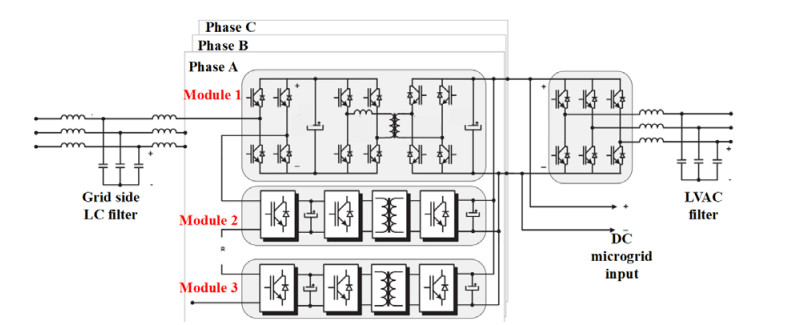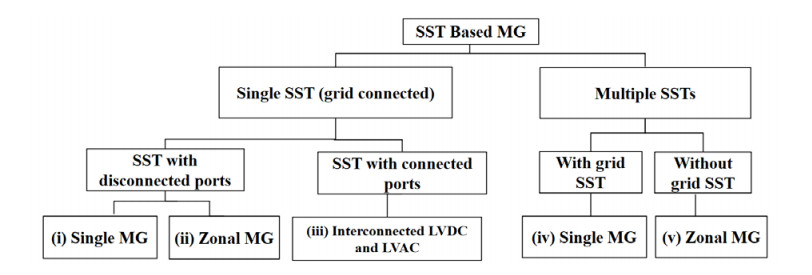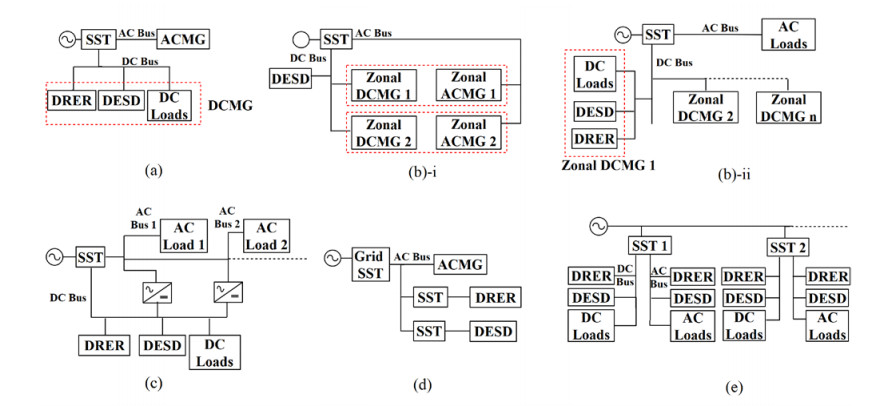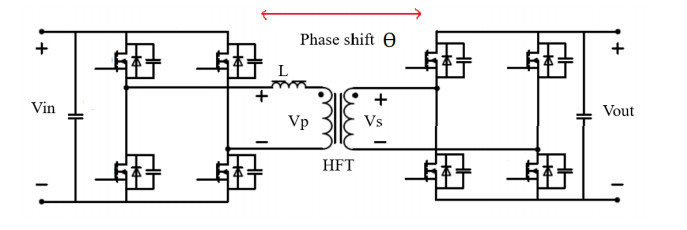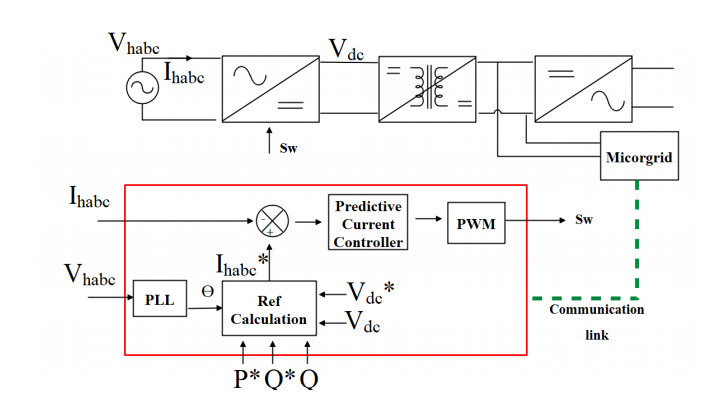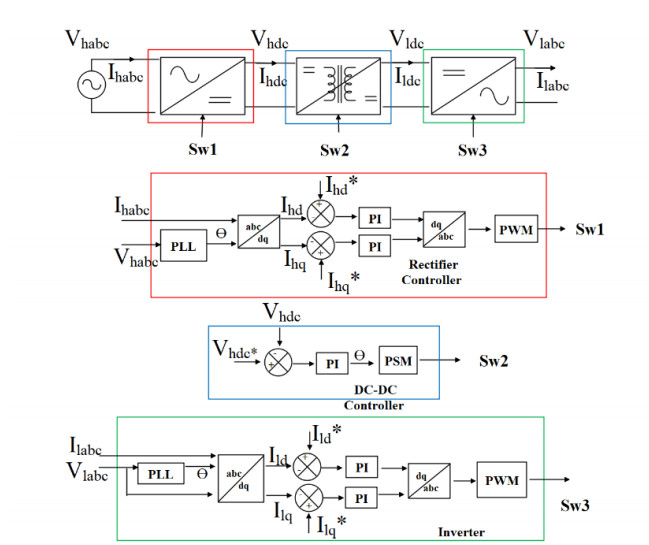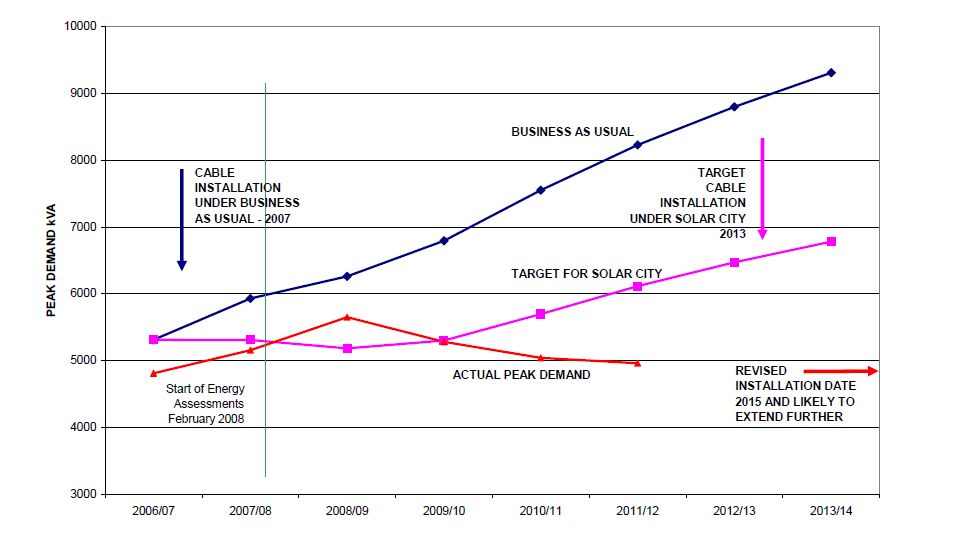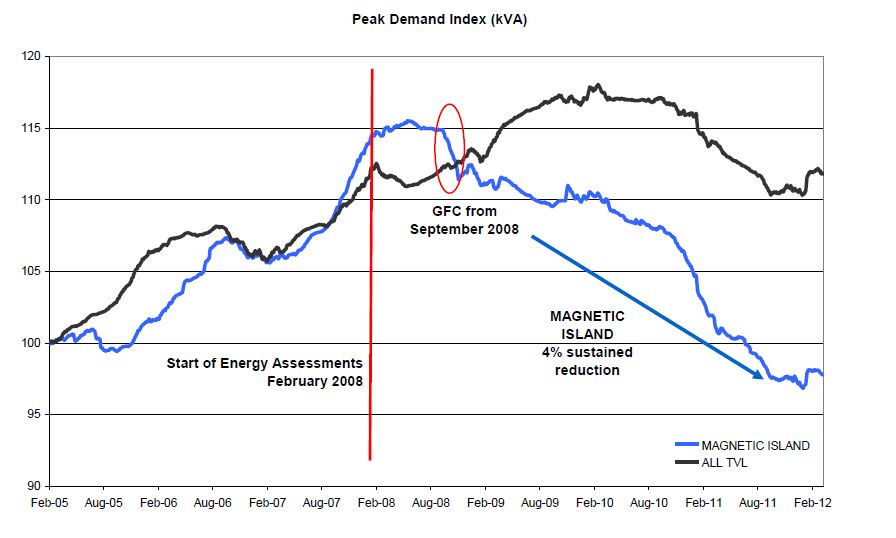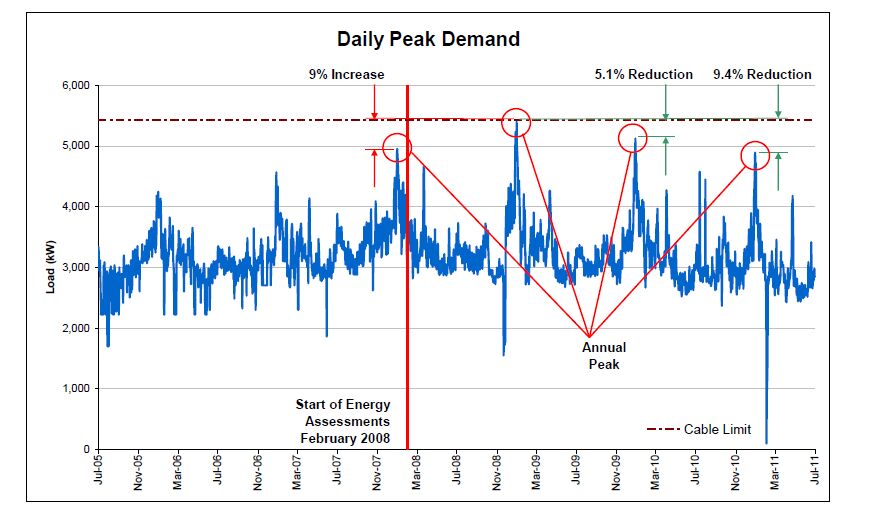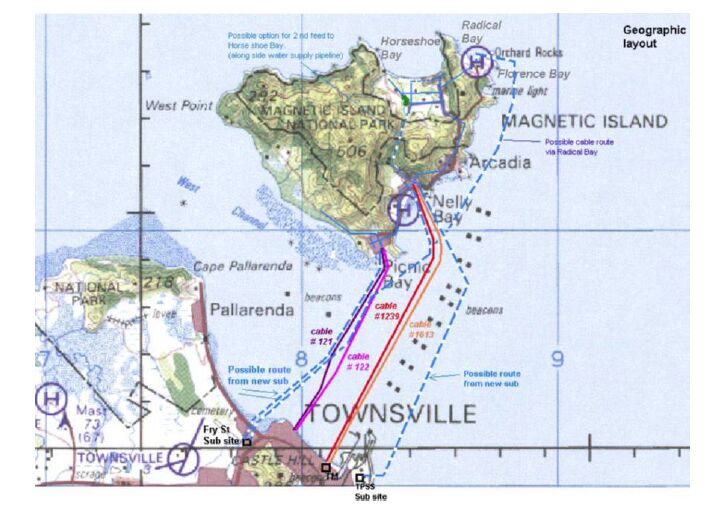| 1.
|
Alina Weise, Roland Büchter, Dawid Pieper, Tim Mathes,
Assessing context suitability (generalizability, external validity, applicability or transferability) of findings in evidence syntheses in healthcare—An integrative review of methodological guidance,
2020,
11,
1759-2879,
760,
10.1002/jrsm.1453
|
|
| 2.
|
Niki M. Medendorp, Pomme E.A. van Maarschalkerweerd, Laxsini Murugesu, Joost G. Daams, Ellen M.A. Smets, Marij A. Hillen,
The impact of communicating uncertain test results in cancer genetic counseling: A systematic mixed studies review,
2020,
103,
07383991,
1692,
10.1016/j.pec.2020.03.015
|
|
| 3.
|
Md Mahbub Hossain,
Umbrella Review as an Emerging Approach of Evidence Synthesis in Health Sciences: A Bibliometric Analysis,
2020,
1556-5068,
10.2139/ssrn.3551055
|
|
| 4.
|
Lalit Kumar Radha Krishna, Lorraine Hui En Tan, Yun Ting Ong, Kuang Teck Tay, Jia Min Hee, Min Chiam, Elisha Wan Ying Chia, Krish Sheri, Xiu Hui Tan, Yao Hao Teo, Cheryl Shumin Kow, Stephen Mason, Ying Pin Toh,
Enhancing Mentoring in Palliative Care: An Evidence Based Mentoring Framework,
2020,
7,
2382-1205,
238212052095764,
10.1177/2382120520957649
|
|
| 5.
|
Kam-Fung Cheung, Michael G.H. Bell, Jyotirmoyee Bhattacharjya,
Cybersecurity in logistics and supply chain management: An overview and future research directions,
2021,
146,
13665545,
102217,
10.1016/j.tre.2020.102217
|
|
| 6.
|
Lisa Xin Ling Ngiam, Yun Ting Ong, Jun Xuan Ng, Joshua Tze Yin Kuek, Jeng Long Chia, Natalie Pei Xin Chan, Chong Yao Ho, Ahmad Bin Hanifah Marican Abdurrahman, Nur Haidah Ahmad Kamal, Clarissa Wei Shuen Cheong, Cheng Han Ng, Xiu Hui Tan, Lorraine Hui En Tan, Annelissa Mien Chew Chin, Stephen Mason, Muhammad Raihan Jumat, Min Chiam, Lalit Kumar Radha Krishna,
Impact of Caring for Terminally Ill Children on Physicians: A Systematic Scoping Review,
2021,
38,
1049-9091,
396,
10.1177/1049909120950301
|
|
| 7.
|
Amitabh Anand, Louise Brøns Kringelum, Charlotte Øland Madsen, Louisa Selivanovskikh,
Interorganizational learning: a bibliometric review and research agenda,
2020,
ahead-of-print,
0969-6474,
10.1108/TLO-02-2020-0023
|
|
| 8.
|
Kaitlyn Tate, Sarah Hewko, Patrick McLane, Pamela Baxter, Karyn Perry, Susan Armijo-Olivo, Carole Estabrooks, Deb Gordon, Greta Cummings,
Learning to lead: a review and synthesis of literature examining health care managers' use of knowledge,
2019,
24,
1355-8196,
57,
10.1177/1355819618786764
|
|
| 9.
|
Sheryl Reimer-Kirkham, Barbara Astle, Ikponwosa Ero, Kristi Panchuk, Duncan Dixon,
Albinism, spiritual and cultural practices, and implications for health, healthcare, and human rights: a scoping review,
2019,
34,
0968-7599,
747,
10.1080/09687599.2019.1566051
|
|
| 10.
|
Joke Depraetere, Christophe Vandeviver, Tom Vander Beken, Ines Keygnaert,
Big Boys Don’t Cry: A Critical Interpretive Synthesis of Male Sexual Victimization,
2020,
21,
1524-8380,
991,
10.1177/1524838018816979
|
|
| 11.
|
Joshua Tze Yin Kuek, Lisa Xin Ling Ngiam, Nur Haidah Ahmad Kamal, Jeng Long Chia, Natalie Pei Xin Chan, Ahmad Bin Hanifah Marican Abdurrahman, Chong Yao Ho, Lorraine Hui En Tan, Jun Leng Goh, Michelle Shi Qing Khoo, Yun Ting Ong, Min Chiam, Annelissa Mien Chew Chin, Stephen Mason, Lalit Kumar Radha Krishna,
The impact of caring for dying patients in intensive care units on a physician’s personhood: a systematic scoping review,
2020,
15,
1747-5341,
10.1186/s13010-020-00096-1
|
|
| 12.
|
Katrin Gerber, Emma Maharaj, Bianca Brijnath, Josefine Antoniades,
End-of-life care for older first-generation migrants: a scoping review,
2020,
2045-435X,
bmjspcare-2020-002617,
10.1136/bmjspcare-2020-002617
|
|
| 13.
|
Ronald B. Brown,
Breakthrough Knowledge Synthesis in the Age of Google,
2020,
5,
2409-9287,
4,
10.3390/philosophies5010004
|
|
| 14.
|
Kwabena Obeng Asiama, Winrich Voss, Rohan Bennett, Innocent Rubanje,
Land consolidation activities in Sub-Saharan Africa towards the agenda 2030: A tale of three countries,
2021,
101,
02648377,
105140,
10.1016/j.landusepol.2020.105140
|
|
| 15.
|
Chong Yao Ho, Cheryl Shumin Kow, Chin Howe Joshua Chia, Jia Ying Low, Yong Hao Melvin Lai, Sarah-Kei Lauw, Ashley Ern Hui How, Lorraine Hui En Tan, Xin Ling Lisa Ngiam, Natalie Pei Xin Chan, Tze Yin Joshua Kuek, Nur Haidah Ahmad Kamal, Jeng Long Chia, Ahmad Bin Hanifah Marican Abdurrahman, Min Chiam, Yun Ting Ong, Annelissa Mien Chew Chin, Ying Pin Toh, Stephen Mason, Lalit Kumar Radha Krishna,
The impact of death and dying on the personhood of medical students: a systematic scoping review,
2020,
20,
1472-6920,
10.1186/s12909-020-02411-y
|
|
| 16.
|
Chaka Chaka,
Translanguaging, Decoloniality, and the Global South: An Integrative Review Study,
2020,
25,
1812-5441,
6,
10.1080/18125441.2020.1802617
|
|
| 17.
|
Joke Depraetere, Christophe Vandeviver, Ines Keygnaert, Tom Vander Beken,
The critical interpretive synthesis: an assessment of reporting practices,
2020,
1364-5579,
1,
10.1080/13645579.2020.1799637
|
|
| 18.
|
Elisha Wan Ying Chia, Huixin Huang, Sherill Goh, Marlyn Tracy Peries, Charlotte Cheuk Yiu Lee, Lorraine Hui En Tan, Michelle Shi Qing Khoo, Kuang Teck Tay, Yun Ting Ong, Wei Qiang Lim, Xiu Hui Tan, Yao Hao Teo, Cheryl Shumin Kow, Annelissa Mien Chew Chin, Min Chiam, Jamie Xuelian Zhou, Lalit Kumar Radha Krishna,
A systematic scoping review of teaching and evaluating communications in the intensive care unit,
2021,
6,
24249270,
3,
10.29060/TAPS.2021-6-1/RA2351
|
|
| 19.
|
Cheryl Shumin Kow, Yao Hao Teo, Yao Neng Teo, Keith Zi Yuan Chua, Elaine Li Ying Quah, Nur Haidah Binte Ahmad Kamal, Lorraine Hui En Tan, Clarissa Wei Shuen Cheong, Yun Ting Ong, Kuang Teck Tay, Min Chiam, Stephen Mason, Lalit Kumar Radha Krishna,
A systematic scoping review of ethical issues in mentoring in medical schools,
2020,
20,
1472-6920,
10.1186/s12909-020-02169-3
|
|
| 20.
|
Amitabh Anand, Piera Centobelli, Roberto Cerchione,
Why should I share knowledge with others? A review-based framework on events leading to knowledge hiding,
2020,
33,
0953-4814,
379,
10.1108/JOCM-06-2019-0174
|
|
| 21.
|
Onouma Thummapol, Tanya Park, Sylvia Barton,
Exploring health services accessibility by indigenous women in Asia and identifying actions to improve it: a scoping review,
2020,
25,
1355-7858,
940,
10.1080/13557858.2018.1470607
|
|
| 22.
|
H. Fernández-Sánchez, K. King, C.B. Enríquez-Hernández,
Revisiones Sistemáticas Exploratorias como metodología para la síntesis del conocimiento científico,
2020,
17,
2395-8421,
10.22201/eneo.23958421e.2020.1.697
|
|
| 23.
|
Alexander Gish, Niki Kiepek, Brenda Beagan,
Methamphetamine use among gay men: An interpretive review of a non-sanctioned occupation,
2020,
27,
1442-7591,
26,
10.1080/14427591.2019.1643398
|
|
| 24.
|
Welma Lubbe, Wilma ten Ham-Baloyi, Karlien Smit,
The integrative literature review as a research method: A demonstration review of research on neurodevelopmental supportive care in preterm infants,
2020,
26,
13551841,
308,
10.1016/j.jnn.2020.04.006
|
|
| 25.
|
Daniel Zhihao Hong, Annabelle Jia Sing Lim, Rei Tan, Yun Ting Ong, Anushka Pisupati, Eleanor Jia Xin Chong, Chrystie Wan Ning Quek, Jia Yin Lim, Jacquelin Jia Qi Ting, Min Chiam, Annelissa Mien Chew Chin, Alexia Sze Inn Lee, Limin Wijaya, Sandy Cook, Lalit Kumar Radha Krishna,
A Systematic Scoping Review on Portfolios of Medical Educators,
2021,
8,
2382-1205,
238212052110003,
10.1177/23821205211000356
|
|
| 26.
|
Xiu Hui Tan, Malia Alexandra Foo, Shaun Li He Lim, Marie Bernadette Xin Yi Lim, Annelissa Mien Chew Chin, Jamie Zhou, Min Chiam, Lalit Kumar Radha Krishna,
Teaching and assessing communication skills in the postgraduate medical setting: a systematic scoping review,
2021,
21,
1472-6920,
10.1186/s12909-021-02892-5
|
|
| 27.
|
Edison D. Macusi, Darshel Ester P. Estor, Elaine Q. Borazon, Misael B. Clapano, Mudjekeewis D. Santos,
Environmental and Socioeconomic Impacts of Shrimp Farming in the Philippines: A Critical Analysis Using PRISMA,
2022,
14,
2071-1050,
2977,
10.3390/su14052977
|
|
| 28.
|
Lynn Varagona, Nancy M. Ballard, Margot (Lisa) Hedenstrom,
Virtue ethics in health care teams; its time has come: Review of the nursing virtue ethics literature,
2022,
30,
0966-0429,
2394,
10.1111/jonm.13757
|
|
| 29.
|
Nail Sariyev,
An assessment of selected tax burdens and reliefs of hidden champions: Theoretical comparison between Slovakia and Ireland,
2022,
11,
23066784,
346,
10.22495/jgrv11i2siart14
|
|
| 30.
|
Sem Vanbelleghem, Melissa De Regge, Yves Van Nieuwenhove, Paul Gemmel,
Barriers and Enablers of Second-Order Problem-Solving Behavior: How Nurses Can Break Away From the Workaround Culture,
2022,
31,
1063-8628,
130,
10.1097/QMH.0000000000000385
|
|
| 31.
|
Jia Yin Lim, Simon Yew Kuang Ong, Chester Yan Hao Ng, Karis Li En Chan, Song Yi Elizabeth Anne Wu, Wei Zheng So, Glenn Jin Chong Tey, Yun Xiu Lam, Nicholas Lu Xin Gao, Yun Xue Lim, Ryan Yong Kiat Tay, Ian Tze Yong Leong, Nur Diana Abdul Rahman, Min Chiam, Crystal Lim, Gillian Li Gek Phua, Vengadasalam Murugam, Eng Koon Ong, Lalit Kumar Radha Krishna,
A systematic scoping review of reflective writing in medical education,
2023,
23,
1472-6920,
10.1186/s12909-022-03924-4
|
|
| 32.
|
Zhi H. Ong, Lorraine H. E. Tan, Haziratul Z. B. Ghazali, Yun T. Ong, Jeffrey W. H. Koh, Rachel Z. E. Ang, Chermaine Bok, Min Chiam, Alexia S. I. Lee, Annelissa M. C. Chin, Jamie X. Zhou, Gene W. H. Chan, Gayathri D. Nadarajan, Lalit K. R. Krishna,
A Systematic Scoping Review on Pedagogical Strategies of Interprofessional Communication for Physicians in Emergency Medicine,
2021,
8,
2382-1205,
238212052110417,
10.1177/23821205211041794
|
|
| 33.
|
Amanda Heffernan, Katrina MacDonald, Fiona Longmuir,
The emotional intensity of educational leadership: a scoping review,
2022,
1360-3124,
1,
10.1080/13603124.2022.2042856
|
|
| 34.
|
Carolyn L. Elias, Kevin M. Gorey,
Online Social Networking among Clinically Depressed Young People: Scoping Review of Potentially Supportive or Harmful Behaviors,
2022,
40,
1522-8835,
79,
10.1080/15228835.2021.2010163
|
|
| 35.
|
Ramana Piussi, Tora Berghdal, David Sundemo, Alberto Grassi, Stefano Zaffagnini, Mikael Sansone, Kristian Samuelsson, Eric Hamrin Senorski,
Self-Reported Symptoms of Depression and Anxiety After ACL Injury: A Systematic Review,
2022,
10,
2325-9671,
232596712110664,
10.1177/23259671211066493
|
|
| 36.
|
Saeedeh Rezaee Vessal, Amitabh Anand,
2022,
978-1-80262-358-1,
61,
10.1108/S2754-586520220000001004
|
|
| 37.
|
Chong Yao Ho, Nicole-Ann Lim, Yun Ting Ong, Alexia Sze Inn Lee, Min Chiam, Gillian Phua Li Gek, Shiva Sarraf-Yazdi, Stephen Mason, Lalit Krishna,
The impact of death and dying on the personhood of senior nurses at the National Cancer Centre Singapore (NCCS): a qualitative study,
2022,
21,
1472-684X,
10.1186/s12904-022-00974-9
|
|
| 38.
|
Gabriël Rafaël Cantaert, Peter Pype, Martin Valcke, Emelien Lauwerier,
Interprofessional Identity in Health and Social Care: Analysis and Synthesis of the Assumptions and Conceptions in the Literature,
2022,
19,
1660-4601,
14799,
10.3390/ijerph192214799
|
|
| 39.
|
Onouma Thummapol, Werayuth Srithumsuk, Tanya Park,
A scoping review of experiences and needs of older LGBTI adults in Asia,
2022,
34,
1053-8720,
403,
10.1080/10538720.2021.2006848
|
|
| 40.
|
Adina Cismaru-Inescu, Stéphane Adam, Anne Nobels, Philippe Kempeneers, Marie Beaulieu, Christophe Vandeviver, Ines Keygnaert, Laurent Nisen,
The Elephant in the Room – A Critical Interpretive Synthesis of Older Adults’ Sexuality,
2022,
34,
1931-7611,
90,
10.1080/19317611.2021.1958040
|
|
| 41.
|
Charlotte Riordon, Sionnach Hendra, Christine Johnson,
The politics of public health: A rapid review of the impact of public health reform on population health outcomes,
2021,
3,
2291-5796,
98,
10.25071/2291-5796.66
|
|
| 42.
|
Qi Wang, Ying Zhu, Shitong Xie, Mohammad Golam Kibria, Qiangqiang Guo, Ahmed Atef Belal, Yanfei Li, Jingyi Zhang, Yaolong Chen, Holger J. Schünemann, Michael G. Wilson, Kehu Yang, John N. Lavis,
Facilitators, barriers and strategies for health-system guidance implementation: a critical interpretive synthesis protocol,
2022,
20,
1478-4505,
10.1186/s12961-022-00908-0
|
|
| 43.
|
Sadie Deschenes, Kaitlyn Tate, Shannon D. Scott, Diane Kunyk,
Recommendations for navigating the experiences of moral distress: A scoping review,
2021,
122,
00207489,
104035,
10.1016/j.ijnurstu.2021.104035
|
|
| 44.
|
Atousa Ghahramani, Maximilian de Courten, Maria Prokofieva,
“The potential of social media in health promotion beyond creating awareness: an integrative review”,
2022,
22,
1471-2458,
10.1186/s12889-022-14885-0
|
|
| 45.
|
Amitabh Anand, Ritu Tripathi, Anjana Karumathil, Tanvika Kalra,
Applying systematic bibliometric methods to track a journal’s impact and review its knowledge contribution,
2022,
71,
2514-9342,
928,
10.1108/GKMC-04-2021-0064
|
|
| 46.
|
Eleanor Jia Xin Chong, Ming Jia Wang, Jia Yin Lim, Grace Shen Shen, Misha Jing Yi Chow, Kai Kee Koh, Annabelle Jia Sing Lim, Daniel Zhihao Hong, Jacquelin Jia Qi Ting, Anushka Pisupati, Betrand Kai Yang Lam, Yun Ting Ong, Min Chiam, Stephen Mason, Lalit Kumar Radha Krishna, Si Ying Tan,
Surgical portfolios: A systematic scoping review,
2022,
10,
26662620,
100107,
10.1016/j.sipas.2022.100107
|
|
| 47.
|
Rei Tan, Jacquelin Jia Qi Ting, Daniel Zhihao Hong, Annabelle Jia Sing Lim, Yun Ting Ong, Anushka Pisupati, Eleanor Jia Xin Chong, Min Chiam, Alexia Sze Inn Lee, Laura Hui Shuen Tan, Annelissa Mien Chew Chin, Limin Wijaya, Warren Fong, Lalit Kumar Radha Krishna,
Medical Student Portfolios: A Systematic Scoping Review,
2022,
9,
2382-1205,
238212052210760,
10.1177/23821205221076022
|
|
| 48.
|
Shirin Ziaei, Anne Hammarström,
What social determinants outside paid work are related to development of mental health during life? An integrative review of results from the Northern Swedish Cohort,
2021,
21,
1471-2458,
10.1186/s12889-021-12143-3
|
|
| 49.
|
Katherine Sievert, Victoria Chen, Rebecca Voisin, Hope Johnson, Christine Parker, Mark Lawrence, Phillip Baker,
Meat production and consumption for a healthy and sustainable Australian food system: Policy options and political dimensions,
2022,
33,
23525509,
674,
10.1016/j.spc.2022.08.007
|
|
| 50.
|
Bijaya Pokharel, Jane Yelland, Leesa Hooker, Angela Taft,
A Systematic Review of Culturally Competent Family Violence Responses to Women in Primary Care,
2023,
24,
1524-8380,
928,
10.1177/15248380211046968
|
|
| 51.
|
Nail Sariyev, Janka Táborecká-Petrovičová,
Performance measurement in a “hidden champion” company: An empirical study,
2022,
12,
20774303,
21,
10.22495/rgcv12i1p2
|
|
| 52.
|
Rui Song Ryan Ong, Ruth Si Man Wong, Ryan Choon Hoe Chee, Chrystie Wan Ning Quek, Neha Burla, Caitlin Yuen Ling Loh, Yu An Wong, Amanda Kay-Lyn Chok, Andrea York Tiang Teo, Aiswarya Panda, Sarah Wye Kit Chan, Grace Shen Shen, Ning Teoh, Annelissa Mien Chew Chin, Lalit Kumar Radha Krishna,
A systematic scoping review moral distress amongst medical students,
2022,
22,
1472-6920,
10.1186/s12909-022-03515-3
|
|
| 53.
|
Mafole Sematlane,
2022,
chapter 9,
9781668450345,
143,
10.4018/978-1-6684-5034-5.ch009
|
|
| 54.
|
Birgit Muskat, Amitabh Anand, Christine Contessotto, Adrian Heng Tsai Tan, Guihyun Park,
Team familiarity—Boon for routines, bane for innovation? A review and future research agenda,
2022,
32,
10534822,
100892,
10.1016/j.hrmr.2021.100892
|
|
| 55.
|
Areni Altun, Helen Brown, Liz Sturgiss, Grant Russell,
Evaluating chronic pain interventions in recent refugees and immigrant populations: A systematic review,
2022,
105,
07383991,
1152,
10.1016/j.pec.2021.08.021
|
|
| 56.
|
Smruti Bulsari, Kiran Pandya,
2023,
chapter 9,
9781668467459,
140,
10.4018/978-1-6684-6745-9.ch009
|
|
| 57.
|
Farid Karimi,
Stakeholders’ Risk Perceptions of Decarbonised Energy System: Insights into Patterns of Behaviour,
2021,
14,
1996-1073,
7205,
10.3390/en14217205
|
|
| 58.
|
Kelly Jia Hui Teo, Mac Yu Kai Teo, Anushka Pisupati, Rui Song Ryan Ong, Chloe Keyi Goh, Claire Hui Xian Seah, You Ru Toh, Neha Burla, Natalie Song Yi Koh, Kuang Teck Tay, Yun Ting Ong, Min Chiam, Warren Fong, Limin Wijaya, Suzanne Pei Lin Goh, Lalit Kumar Radha Krishna,
Assessing professional identity formation (PIF) amongst medical students in Oncology and Palliative Medicine postings: a SEBA guided scoping review,
2022,
21,
1472-684X,
10.1186/s12904-022-01090-4
|
|
| 59.
|
Emily C. Koller, Christine Berg,
Anorexia Nervosa: A Narrative Review and Conceptual Practice Model,
2021,
37,
0164-212X,
403,
10.1080/0164212X.2021.1957064
|
|
| 60.
|
Paul Agu Igwe, Nnamdi O. Madichie, David Gamariel Rugara,
Decolonising research approaches towards non-extractive research,
2022,
25,
1352-2752,
453,
10.1108/QMR-11-2021-0135
|
|
| 61.
|
Sherill Goh, Ruth Si Man Wong, Elaine Li Ying Quah, Keith Zi Yuan Chua, Wei Qiang Lim, Aubrey Ding Rui Ng, Xiu Hui Tan, Cheryl Shumin Kow, Yao Hao Teo, Elijah Gin Lim, Anushka Pisupati, Eleanor Jia Xin Chong, Nur Haidah Ahmad Kamal, Lorraine Hui En Tan, Kuang Teck Tay, Yun Ting Ong, Min Chiam, Alexia Sze Inn Lee, Annelissa Mien Chew Chin, Stephen Mason, Lalit Kumar Radha Krishna,
Mentoring in palliative medicine in the time of covid-19: a systematic scoping review,
2022,
22,
1472-6920,
10.1186/s12909-022-03409-4
|
|
| 62.
|
Chrystie Wan Ning Quek, Ryan Rui Song Ong, Ruth Si Man Wong, Sarah Wye Kit Chan, Amanda Kay-Lyn Chok, Grace Shen Shen, Andrea York Tiang Teo, Aiswarya Panda, Neha Burla, Yu An Wong, Ryan Choon Hoe Chee, Caitlin Yuen Ling Loh, Kun Woo Lee, Gabrielle Hui Ning Tan, Ryan Emmanuel Jian Leong, Natalie Song Yi Koh, Yun Ting Ong, Annelissa Mien Chew Chin, Min Chiam, Crystal Lim, Xuelian Jamie Zhou, Simon Yew Kuang Ong, Eng Koon Ong, Lalit Kumar Radha Krishna,
Systematic scoping review on moral distress among physicians,
2022,
12,
2044-6055,
e064029,
10.1136/bmjopen-2022-064029
|
|
| 63.
|
Abdul‐Ganiyu Fuseini, Lenore Ley, Helen Rawson, Bernice Redley, Debra Kerr,
A systematic review of patient‐reported dignity and dignified care during acute hospital admission,
2022,
78,
0309-2402,
3540,
10.1111/jan.15370
|
|
| 64.
|
Huixin Huang, Rachelle Qi En Toh, Christine Li Ling Chiang, Ashiley Annushri Thenpandiyan, Prachi Simran Vig, Randal Wei Liang Lee, Min Chiam, Alexia Sze Inn Lee, Vijayendra Ranjan Baral, Lalit Kumar Radha Krishna,
Impact of Dying Neonates on Doctors' and Nurses' Personhood: A Systematic Scoping Review,
2022,
63,
08853924,
e59,
10.1016/j.jpainsymman.2021.07.002
|
|
| 65.
|
Federico Cavallaro, Silvio Nocera,
Integration of passenger and freight transport: A concept-centric literature review,
2022,
43,
22105395,
100718,
10.1016/j.rtbm.2021.100718
|
|
| 66.
|
Keith Zi Yuan Chua, Elaine Li Ying Quah, Yun Xue Lim, Chloe Keyi Goh, Jieyu Lim, Darius Wei Jun Wan, Simone Meiqi Ong, Chi Sum Chong, Kennan Zhi Guang Yeo, Laura Shih Hui Goh, Ray Meng See, Alexia Sze Inn Lee, Yun Ting Ong, Min Chiam, Eng Koon Ong, Jamie Xuelian Zhou, Crystal Lim, Simon Yew Kuang Ong, Lalit Krishna,
A systematic scoping review on patients’ perceptions of dignity,
2022,
21,
1472-684X,
10.1186/s12904-022-01004-4
|
|
| 67.
|
Bingjie Liu-Lastres,
Beyond simple messaging: a review of crisis communication research in hospitality and tourism,
2022,
34,
0959-6119,
1959,
10.1108/IJCHM-11-2021-1404
|
|
| 68.
|
Vaishnavi Venktaramana, Eleanor Kei Ying Loh, Clarissa Jing Wen Wong, Jun Wei Yeo, Andrea York Tiang Teo, Celest Sin Yu Chiam, Dillon Jie Ming Foo, Faith Teo, Jonathan Liang, Vijayprasanth Raveendran, Luke Cheng Lin Chng, Shiwei Xiao, Kevin Chong, Seng Leong Quek, Christine Li Ling Chiang, Rachelle Qi En Toh, Caleb Wei Hao Ng, Elijah Gin Lim, Shariel Leong, Kuang Teck Tay, Amos Chan, Elisha Wan Ying Chia, Laura Hui Shuen Tan, Yun Ting Ong, Krish Sheri, Jun Xuan Ng, Annelissa Mien Chew Chin, Jamie Xuelian Zhou, Min Chiam, Alexia Sze Inn Lee, Stephen Mason, Lalit Kumar Radha Krishna,
A systematic scoping review of communication skills training in medical schools between 2000 and 2020,
2022,
44,
0142-159X,
997,
10.1080/0142159X.2022.2054693
|
|
| 69.
|
Aamod D Shrestha, Johanne G Andersen, Dinesh Neupane, Sarita Ghimire, Christine Campbell, Per Kallestrup,
Protocol for systematic literature review on implementation of cervical cancer screening and associated factors in Nepal from 2000 to 2018,
2020,
4,
2399-1623,
10.29392/001c.12505
|
|
| 70.
|
Carlee Wilson, Allyson Jones, Kara Schick-Makaroff, Esther S. Kim,
Understanding the impact of group therapy on health-related quality of life of people with Aphasia: a scoping review,
2021,
2050-571X,
1,
10.1080/2050571X.2021.1917216
|
|
| 71.
|
Prachi Simran Vig, Jia Yin Lim, Randal Wei Liang Lee, Huixin Huang, Xiu Hui Tan, Wei Qiang Lim, Marie Bernadette Xin Yi Lim, Alexia Sze Inn Lee, Min Chiam, Crystal Lim, Vijayendra Ranjan Baral, Lalit Kumar Radha Krishna,
Parental bereavement – impact of death of neonates and children under 12 years on personhood of parents: a systematic scoping review,
2021,
20,
1472-684X,
10.1186/s12904-021-00831-1
|
|
| 72.
|
Elaine Li Ying Quah, Keith Zi Yuan Chua, Jun Kiat Lua, Darius Wei Jun Wan, Chi Sum Chong, Yun Xue Lim, Lalit Krishna,
A Systematic Review of Stakeholder Perspectives of Dignity and Assisted Dying,
2023,
65,
08853924,
e123,
10.1016/j.jpainsymman.2022.10.004
|
|
| 73.
|
Onouma Thummapol, Sadaf Murad, Oluwakemi Amodu, Megan Kennedy,
Exploring the Therapeutic Effects of Music Intervention Embedded With Binaural Beats on Health and Well-Being of Older People: A Scoping Review,
2024,
0733-4648,
10.1177/07334648241275965
|
|
| 74.
|
Yao Hao Teo, Tan Ying Peh, Ahmad Bin Hanifah Marican Abdurrahman, Alexia Sze Inn Lee, Min Chiam, Warren Fong, Limin Wijaya, Lalit Kumar Radha Krishna,
A modified Delphi approach to nurturing professionalism in postgraduate medical education in Singapore,
2024,
65,
0037-5675,
313,
10.11622/smedj.2021224
|
|
| 75.
|
Natalie E. Pope, Emily A. Greenfield, Laura Keyes, Elizabeth Russell,
A Review of Public Sector Engagement in Age-Friendly Community Initiatives,
2024,
0895-9420,
1,
10.1080/08959420.2024.2376934
|
|
| 76.
|
Sunny C Okoroafor, Christmal Dela Christmals,
Optimizing the roles of health workers to improve access to health services in Africa: an implementation framework for task shifting and sharing for policy and practice,
2023,
23,
1472-6963,
10.1186/s12913-023-09848-z
|
|
| 77.
|
Gábor Rónaföldi-Széll,
Succession and gender dynamics in family firms – A systematic literature review and future research agenda,
2024,
55,
01330179,
59,
10.14267/VEZTUD.2024.07-08.06
|
|
| 78.
|
Nami Kawakyu, Megan Coe, Bradley H. Wagenaar, Kenneth Sherr, Sarah Gimbel, Edward Nicol,
Refining the Performance of Routine Information System Management (PRISM) framework for data use at the local level: An integrative review,
2023,
18,
1932-6203,
e0287635,
10.1371/journal.pone.0287635
|
|
| 79.
|
Michal Kaššaj, Tomáš Peráček,
Synergies and Potential of Industry 4.0 and Automated Vehicles in Smart City Infrastructure,
2024,
14,
2076-3417,
3575,
10.3390/app14093575
|
|
| 80.
|
Johan Högberg, Ramana Piussi, Johan Lövgren, Mathias Wernbom, Rebecca Simonsson, Kristian Samuelsson, Eric Hamrin Senorski,
Restoring Knee Flexor Strength Symmetry Requires 2 Years After ACL Reconstruction, But Does It Matter for Second ACL Injuries? A Systematic Review and Meta-analysis,
2024,
10,
2198-9761,
10.1186/s40798-023-00666-5
|
|
| 81.
|
Cara Evans, Julia Abelson, Nick Kates, Alice Cavanagh, John N. Lavis, Tommaso Martino,
A Multilevel Framework for Complex Care: A Critical Interpretive Synthesis,
2023,
2023,
1365-2524,
1,
10.1155/2023/4487200
|
|
| 82.
|
Jasmine Svantesson, Ramana Piussi, Elin Weissglas, Eleonor Svantesson, Alexandra Horvath, Erik Börjesson, Andy Williams, Robert Prill, Kristian Samuelsson, Eric Hamrin Senorski,
Shedding light on the non-operative treatment of the forgotten side of the knee: rehabilitation of medial collateral ligament injuries—a systematic review,
2024,
10,
2055-7647,
e001750,
10.1136/bmjsem-2023-001750
|
|
| 83.
|
Zoe Guerrero, Dagmar Civišová, Petr Winkler,
Mental health and access to care among the Roma population in Europe: A scoping review,
2024,
61,
1363-4615,
118,
10.1177/13634615231200853
|
|
| 84.
|
Palaniappan Ganesh Nagappan, Samuel Brown, Alex McManus, Sarah Sayers, Shazia Absar, Sapphire Rou Xi Tan, Isla Kuhn, Edward Lau, Charlotte Tulinius,
Changes in medical student attendance and its impact on student educational outcomes: a systematic review protocol,
2024,
14,
2044-6055,
e078252,
10.1136/bmjopen-2023-078252
|
|
| 85.
|
Begetayinoral Kussia Lahole, Tesfahun Simon, Wondimu Ewunetu, Wondafrash Kussia,
Protocol for a systematic review and meta-analysis on intention to screen for cervical cancer and predictors among women of reproductive age in Ethiopia,
2024,
2,
2753-4294,
e000585,
10.1136/bmjph-2023-000585
|
|
| 86.
|
Katja Rogers, Teresa Hirzle, Sukran Karaosmanoglu, Paula Toledo Palomino, Ekaterina Durmanova, Seiji Isotani, Lennart E. Nacke,
An Umbrella Review of Reporting Quality in CHI Systematic Reviews: Guiding Questions and Best Practices for HCI,
2024,
31,
1073-0516,
1,
10.1145/3685266
|
|
| 87.
|
Gillian Li Gek Phua, Jasmine Lerk Juan Owyong, Ian Tze Yong Leong, Suzanne Goh, Nagavalli Somasundaram, Eileen Yi Ling Poon, Anupama Roy Chowdhury, Simon Yew Kuang Ong, Crystal Lim, Vengadasalam Murugam, Eng Koon Ong, Stephen Mason, Ruaridh Hill, Lalit Kumar Radha Krishna,
A systematic scoping review of group reflection in medical education,
2024,
24,
1472-6920,
10.1186/s12909-024-05203-w
|
|
| 88.
|
Yvonne Fitzmaurice, Suzanne Beeke, Jytte Isaksen, Una Cunningham, Caroline Jagoe, Éidín Ní Shé, Ruth McMenamin,
Communication partner training for student health and social care professionals engaging with people with stroke acquired communication difficulties: A protocol for a realist review.,
2024,
6,
2515-4826,
60,
10.12688/hrbopenres.13783.2
|
|
| 89.
|
Anne Hammarström, Hugo Westerlund, Urban Janlert, Pekka Virtanen, Shirin Ziaei, Per-Olof Östergren,
How do labour market conditions explain the development of mental health over the life-course? A conceptual integration of the ecological model with life-course epidemiology in an integrative review of results from the Northern Swedish Cohort,
2024,
24,
1471-2458,
10.1186/s12889-024-18461-6
|
|
| 90.
|
Jodie Gill, Alexis Jones, Klara Price, Egan Goodison, Philip Tyson,
A mixed‐method systematic review of the perspectives of young people, carers and professionals on psychiatric diagnosis in childhood and adolescence,
2024,
37,
1073-6077,
10.1111/jcap.12459
|
|
| 91.
|
Amalia Kouskoura, Eleni Kalliontzi, Dimitrios Skalkos, Ioannis Bakouros,
Assessing the Key Factors Measuring Regional Competitiveness,
2024,
16,
2071-1050,
2574,
10.3390/su16062574
|
|
| 92.
|
Anu-Riina Svenlin, Tiina Lehto-Lundén,
Respite care from the child’s perspective – The Support Family Intervention in Finland,
2023,
47,
0308-5759,
138,
10.1177/03085759231176566
|
|
| 93.
|
Ramana Piussi, Rebecca Simonson, Bálint Zsidai, Alberto Grassi, Jon Karlsson, Francesco Della Villa, Kristian Samuelsson, Eric Hamrin Senorski,
Better Safe Than Sorry? A Systematic Review with Meta-analysis on Time to Return to Sport After ACL Reconstruction as a Risk Factor for Second ACL Injury,
2024,
54,
0190-6011,
161,
10.2519/jospt.2023.11977
|
|
| 94.
|
Yun Xue Lim, Elaine Li Ying Quah, Keith Zi Yuan Chua, Casper Keegan Lin Ronggui, Ranitha Govindasamy, Simone Meiqi Ong, Eng Koon Ong, Gillian Li Gek Phua, Lalit Kumar Radha Krishna,
A Systematic Scoping Review on Dignity Assessment Tools,
2024,
67,
08853924,
e263,
10.1016/j.jpainsymman.2023.12.008
|
|
| 95.
|
Elaine Li Ying Quah, Keith Zi Yuan Chua, Casper Keegan Ronggui Lin, Andrew Vimal Vijayan, Nur Amira Binte Abdul Hamid, Jasmine Lerk Juan Owyong, Neeta Satku, Natalie Woong, Crystal Lim, Gillian Li Gek Phua, Eng Koon Ong, Warren Fong, Lalit Kumar Radha Krishna,
The role of patients’ stories in medicine: a systematic scoping review,
2023,
22,
1472-684X,
10.1186/s12904-023-01319-w
|
|
| 96.
|
Tim Stroh, Anne-Laure Mention, Cameron Duff,
The impact of evolved psychological mechanisms on innovation and adoption: A systematic literature review,
2023,
125,
01664972,
102759,
10.1016/j.technovation.2023.102759
|
|
| 97.
|
Neha Burla, Rui Song Ryan Ong, Ryan Choon Hoe Chee, Ruth Si Man Wong, Shao Yun Neo, Nur Amira Binte Abdul Hamid, Crystal Lim, Eng Koon Ong, Nagavalli Somasundaram, Lalit Kumar Radha Krishna,
A systematic scoping review on group non-written reflections in medical education,
2024,
24,
1472-6920,
10.1186/s12909-024-06117-3
|
|
| 98.
|
Rita Elaine Silver, Vinay Kumar, Deborah Chua Fengyi, Michael Tan Lip Thye, Johannis Auri Bin Abdul Aziz,
For What and for Whom? Expanding the Role of Research Syntheses for Diverse Stakeholders,
2024,
53,
0013-189X,
464,
10.3102/0013189X241285414
|
|
| 99.
|
Yvonne Fitzmaurice, Suzanne Beeke, Jytte Isaksen, Una Cunningham, Caroline Jagoe, Éidín Ní Shé, Ruth McMenamin,
Communication partner training for student health and social care professionals engaging with people with stroke acquired communication difficulties: A realist review.,
2023,
6,
2515-4826,
60,
10.12688/hrbopenres.13783.1
|
|
| 100.
|
Danielle Allard, Tami Oliphant,
With a Little Help from Our Friends: Applying a Critical Friends Orientation to Critical Literature Reviews,
2024,
61,
2373-9231,
13,
10.1002/pra2.1004
|
|
| 101.
|
Sunday Adeola Ajagbe, Joseph Bamidele Awotunde, Ademola Temidayo Opadotun, Matthew O. Adigun,
2023,
Chapter 4,
978-981-99-5084-3,
39,
10.1007/978-981-99-5085-0_4
|
|
| 102.
|
Darius Wei Jun Wan, Laura Shih Hui Goh, Mac Yu Kai Teo, Celestine Jia Ling Loh, Gerald Hng Kai Yak, Joanna Jing Hui Lee, Nila Ravindran, Nur Diana Abdul Rahman, Min Chiam, Eng Koon Ong, Nagavalli Somasundaram, Ying Yin Lim, Gillian Li Gek Phua, Lalit Kumar Radha Krishna,
Enhancing self-care education amongst medical students: a systematic scoping review,
2024,
24,
1472-6920,
10.1186/s12909-023-04965-z
|
|
| 103.
|
Tea Rosic, Elizabeth Lovell, Harriet MacMillan, Zainab Samaan, Rebecca L Morgan,
Components of Outpatient Child and Youth Concurrent Disorders Programs: A Critical Interpretive Synthesis: Composantes des programmes de troubles concomitants des enfants et des jeunes ambulatoires : une synthèse interprétative critique,
2024,
69,
0706-7437,
381,
10.1177/07067437231212037
|
|
| 104.
|
Katherine P. Kelly, Kathleen A. Knafl, Susan Keller, Pamela S. Hinds,
Thematic expansion: A new strategy for theory development,
2021,
43,
0193-9459,
962,
10.1177/0193945920984795
|
|
| 105.
|
Rahma K. Dewi, Sri Sumarni,
Parenting style and family empowerment for children's growth and development: a systematic review,
2023,
14,
2038-9930,
8,
10.4081/jphia.2023.2582
|
|
| 106.
|
Milou S. H. van Dieën, Wolter Paans, Massimo A. Mariani, Willem Dieperink, Fredrike Blokzijl,
Roles and competencies of nurses and physicians in shared decision‐making in cardiac surgery: A scoping review,
2024,
80,
0309-2402,
60,
10.1111/jan.15811
|
|
| 107.
|
Katarzyna Turoń,
Factors Affecting Car-Sharing Services,
2023,
6,
2624-6511,
1185,
10.3390/smartcities6020057
|
|
| 108.
|
Tiago Bigolin, Edson Talamini,
Impacts of Climate Change Scenarios on the Corn and Soybean Double-Cropping System in Brazil,
2024,
12,
2225-1154,
42,
10.3390/cli12030042
|
|
| 109.
|
Vitaliano Fiorillo, Biagio Maria Amico,
Milk Quality and Economic Sustainability in Dairy Farming: A Systematic Review of Performance Indicators,
2024,
5,
2624-862X,
384,
10.3390/dairy5030031
|
|
| 110.
|
Astrid Bertrand, Tiphaine Viard, Rafik Belloum, James R. Eagan, Winston Maxwell,
2023,
On Selective, Mutable and Dialogic XAI: a Review of What Users Say about Different Types of Interactive Explanations,
9781450394215,
1,
10.1145/3544548.3581314
|
|
| 111.
|
Jelena Komanchuk, Judy L. Cameron, Stefan Kurbatfinski, Linda Duffett-Leger, Nicole Letourneau,
A realist review of digitally delivered child development assessment and screening tools: Psychometrics and considerations for future use,
2023,
183,
03783782,
105818,
10.1016/j.earlhumdev.2023.105818
|
|
| 112.
|
Jonathan Zhen Liang, Donovan Kai Wei Ng, Vijayprasanth Raveendran, Mac Yu Kai Teo, Elaine Li Ying Quah, Keith Zi Yuan Chua, Jun Kiat Lua, Jasmine Lerk Juan Owyong, Andrew Vimal Vijayan, Nur Amira Binte Abdul Hamid, Ting Ting Yeoh, Eng Koon Ong, Gillian Li Gek Phua, Stephen Mason, Warren Fong, Crystal Lim, Natalie Woong, Simon Yew Kuang Ong, Lalit Kumar Radha Krishna, Marsa Gholamzadeh,
The impact of online education during the Covid-19 pandemic on the professional identity formation of medical students: A systematic scoping review,
2024,
19,
1932-6203,
e0296367,
10.1371/journal.pone.0296367
|
|
| 113.
|
Rosa Angélica Priego Morales,
Management leadership in the New Mexican School and teacher revaluation from the recognition of human talent: a scoping review,
2024,
29546168,
10.58763/rc2024197
|
|
| 114.
|
Nofie Iman,
Service modularity in the digital era: integrating environmental sustainability and post-pandemic insights,
2024,
1756-669X,
10.1108/IJQSS-05-2023-0061
|
|
| 115.
|
Camila F. Pfeiffer, Wendy L. Magee, Rebecca Fülöp, Travis C. Nace, Candela Castro, Agustina Iturri, Jimena Franceschi, Gabriela Echauri, Liliana Gassull, María Julieta Russo,
Exploring Music-Based Interventions for Executive Functioning and Emotional Well-Being in Stroke Rehabilitation: A Scoping Review,
2024,
5,
2673-4087,
565,
10.3390/neurosci5040041
|
|
| 116.
|
Verónica Estruch-García, María Dolores Gil-Llario, Estefanía Ruiz-Palomino, Olga Fernández-García, Vicente Morell-Mengual, Zélia Ferreira Caçador Anastácio,
Systematic Integrative Review: Sex Education for People with Autism Spectrum Disorder,
2025,
43,
0146-1044,
10.1007/s11195-024-09877-4
|
|
| 117.
|
Kari Dee Vallury, Amanda Asher, Olivia Sarri, Nicola Sheeran, Jami Leichliter,
Characteristics and determinants of quality non-directive pregnancy options counselling: a scoping review,
2025,
22,
1448-5028,
10.1071/SH24170
|
|
| 118.
|
Kirsten M. Greer, Kyla M. Cary, Morgan E. PettyJohn, Gianna Casaburo, Carin Graves, Kristen N. Jozkowski,
A Qualitative Meta-Synthesis of Women’s Experiences of Internalized Sociocultural Sexual Pressure,
2025,
0022-4499,
1,
10.1080/00224499.2025.2451144
|
|
| 119.
|
Wei Chen Chang, Wan Zi Lin, Wen-Zhi Chen, Wen-Ko Chiou, Oliver Shinbou Lin,
Design-driven innovation in the public sector: insights from case studies of initiatives in Taiwan,
2025,
1751-6234,
1,
10.1080/17516234.2025.2457166
|
|
| 120.
|
Hiroyuki Suzuki, Yusuke Tsuboko, Manabu Tamura, Ken Masamune, Kiotaka Iwasaki,
Synthesis of the clinical utilities and issues of intraoperative imaging devices in clinical reports: a systematic review and thematic synthesis,
2025,
25,
1472-6947,
10.1186/s12911-025-02915-x
|
|
| 121.
|
Charles Birungi, Michael A. Obst,
Using economics to advance health equity: What we know, don't know and need to know (but may never know) from Markus Haacker,
2025,
2,
2994-4694,
10.1080/29944694.2025.2456791
|
|
| 122.
|
Abdullah Almunifi,
Impact of Artificial Intelligence on Metabolic Bariatric Surgery (MBS) and Minimally Invasive Surgery (MIS): A Literature Review,
2025,
Volume 17,
1178-7082,
161,
10.2147/OAS.S482690
|
|
| 123.
|
Yoeurng Sak, Paradise Ros,
Reviewing Needs and Techniques of Mentors for Mentoring New Teachers
,
2025,
14,
2327-2619,
52,
10.11648/j.edu.20251402.13
|
|
| 124.
|
Luke Tan, Sonia Sheri, Yun Yao Goh, Raeanne Fong, Ranitha Govindasamy, Yun Ting Ong, Nur Amira Binte Abdul Hamid, Tessa Li Xiang Low, Lalit Kumar Radha Krishna,
Experiences of healthcare professionals providing palliative care in home settings - a scoping review,
2025,
24,
1472-684X,
10.1186/s12904-025-01728-z
|
|
| 125.
|
Kathleen Parry, Christopher Picard, Rashmi Devkota, Kaitlyn Tate,
Emergency Department Navigator Interventions and Outcome Measures: A Scoping Review,
2025,
20,
1748-3735,
10.1111/opn.70026
|
|
| 126.
|
Ольга Подпалова, Євдокія Решетнік, Олександр Ковальчук, Ірина Прибитько, Руслан Мневець,
ПІДВИЩЕННЯ ІННОВАЦІЙНОСТІ МЕДИЧНОЇ ОСВІТИ ЧЕРЕЗ СТУДЕНТСЬКІ НАУКОВІ ОБ’ЄДНАННЯ,
2025,
2710-3056,
479,
10.36074/grail-of-science.10.01.2025.071
|
|
| 127.
|
Douglas S. Lownsbery,
A Synthesis Review of Four Literature Reviews of Disaster Risk Reduction Education for Children,
2025,
22124209,
105555,
10.1016/j.ijdrr.2025.105555
|
|
| 128.
|
Chiara Bernuzzi, Giulia Paganin, Sara Petrilli, Simona Margheritti,
Old trends in new clothing? Exploring the quiet quitting phenomenon through a scoping review,
2025,
1046-1310,
10.1007/s12144-025-07920-x
|
|
| 129.
|
Giti Bahrami, Nooshin Ghavidel, Zohreh Mahmoodi, Ronan McDermott, Hamed Seddighi,
The health effects of climate change: identifying strategies, policies, and knowledge gaps: an umbrella review,
2025,
0960-3123,
1,
10.1080/09603123.2025.2498624
|
|
| 130.
|
Ukachukwu O Abaraogu, Philippa Dall, Chris Seenan, Sarah Rhodes, Trish Gorely, Joanna McParland, Julie Brittenden, Ebuka M Anieto, Lorna Booth, Cathy Gormal, Jeremy Dearling, Candida Fenton, Sarah Audsley, Kimberley Fairer, Lindsay Bearne, Dawn A Skelton,
Behaviour change interventions to promote physical activity in people with intermittent claudication: the OPTIMA systematic review,
2025,
2046-4924,
1,
10.3310/ZBNG5240
|
|
| 131.
|
David Steingard, Kathleen Rodenburg,
Assessing the Societal Impact of Academic Research With Artificial Intelligence (AI): A Scoping Review of Business School Scholarship as a ‘Force for Good’,
2025,
38,
0953-1513,
10.1002/leap.2010
|
|
| 132.
|
Quan Nha Hong, Ginny Brunton,
Helping Trainees Understand the Strategies to Minimize Errors and Biases in Systematic Review Approaches,
2025,
41,
0167-8329,
161,
10.1177/01678329251323445
|
|
| 133.
|
Charan Bijlani, Denise Ndlovu, Dianna Smith, Claire Thompson, Leandro Garcia, Cornelia Junghans, Eszter P. Vamos, Paraskevi Seferidi,
Understanding food insecurity in England: a systems-based approach,
2025,
2574-1292,
1,
10.1080/25741292.2025.2523114
|
|
| 134.
|
Julie B. Grant, Jacqueline Jones, Carey Candrian, Kathleen S. Oman, Sean M. Reed,
The Role of Nursing Communication: A Critical Interpretive Synthesis,
2025,
2666142X,
100373,
10.1016/j.ijnsa.2025.100373
|
|
| 135.
|
Emma L. Kuster, Doo H. Lim,
Gamifying climate content to enhance climate literacy: Opportunities for adult learners,
2025,
1089-9995,
1,
10.1080/10899995.2025.2531580
|
|
| 136.
|
A Critical Review of CSR Projects and Their Impacts on Infrastructural and Social Development,
2025,
14,
2278-2540,
1066,
10.51583/IJLTEMAS.2025.1406000117
|
|
| 137.
|
O. A. Tunkevichus,
Higher education readiness to implement artifi cial intelligence: a bibliometric analysis,
2025,
60,
01300105,
319,
10.55959/MSU0130-0105-6-60-3-14
|
|









 DownLoad:
DownLoad:

